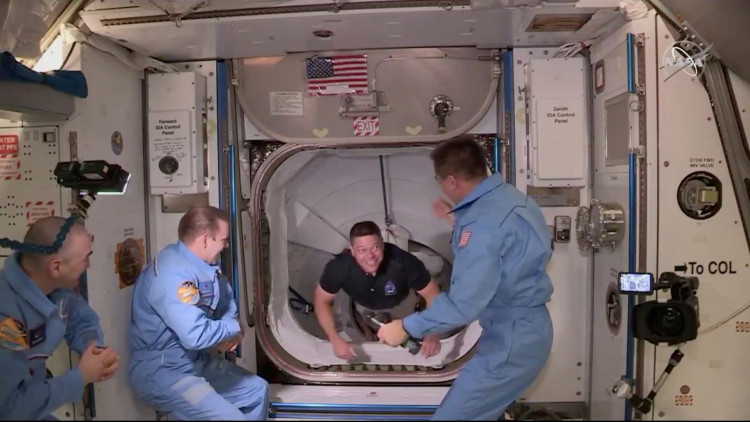An unnamed, high-ranking Russian space official is accusing a NASA astronaut of causing damage to a Russian Soyuz spacecraft in 2018 so she could return to Earth early.
TASS, a Russian news agency backed by the Russian government, published some defamatory allegations regarding NASA astronaut Serena Auón-Chancellor.
It accused Auón-Chancellor of having an emotional breakdown aboard the space station, which resulted in the orbiting laboratory being damaged.
NASA has since released a statement, saying the agency stands behind its astronauts.
NASA's human spaceflight chief Kathy Lueders told reporters during a media teleconference regarding recent delays with Boeing's Starliner spacecraft that the personal attacks on NASA astronaut and Expedition 56 flight engineer Auón-Chancellor were unfounded.
"Serena is an extremely well-respected crew member who has served her country and made invaluable contributions to the agency," Lueders told reporters. "And I stand behind Serena - we stand behind Serena and her professional conduct and I did not find this accusation credible."
Senator Bill Nelson, the administrator of NASA, agreed with Lueders' sentiments via Twitter on Friday afternoon.
Russian journalist Mikhail Kotov interviews an anonymous official from Russia's space agency, Roscosmos, in the TASS report.
The report is particularly troubling since it not only expressly identifies Auón-Chancellor -- the station's only female astronaut at the time -- but also exposes a medical problem she had while in orbit.
All astronaut medical records and ailments are typically kept confidential by NASA.
Auón-Chancellor was treated for a deep vein thrombosis, also known as a blood clot, in the jugular vein of her neck after she returned to Earth. However, Kotov suggests that dealing with such a situation in space would prompt her to desire to leave the ISS early and, as a result, sabotage the spacecraft that transported her there in order to return home ahead of schedule.
Controllers at NASA's Johnson Space Center in Houston discovered a minor pressure drop aboard the orbiting station on Aug. 29, 2018. The crew was notified the following day, and the leak was traced to a small hole in Russia's Soyuz MS-09 spacecraft.
The problem was fixed by Russian cosmonaut Sergey Prokopyev, who was the commander of the Soyuz at the time, by sealing the 2-millimeter (0.08 inches) hole using epoxy and gauze.
The crew was never in danger, according to NASA authorities, at the time of the leak.




